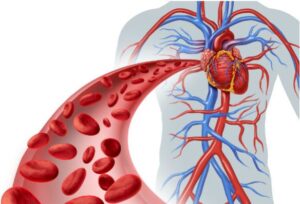Apixaban (brand name Eliquis) is a direct oral anticoagulant (DOAC) commonly used for preventing and treating thromboembolic disorders. It inhibits factor Xa, a key enzyme in the coagulation cascade. Below is an overview of European Union (EU) guidelines and recommendations for its use:
Indications
Apixaban is approved in the EU for:
- Prevention of stroke and systemic embolism in adult patients with non-valvular atrial fibrillation (NVAF) and one or more risk factors, such as:
- Previous stroke or transient ischemic attack (TIA)
- Age ≥75 years
- Hypertension
- Diabetes mellitus
- Symptomatic heart failure (NYHA class ≥II)
- Treatment of deep vein thrombosis (DVT) and pulmonary embolism (PE):
- Initial treatment and prevention of recurrent DVT/PE.
- Prevention of venous thromboembolism (VTE):
- In adults undergoing elective hip or knee replacement surgery.
Dosage Recommendations
For Stroke Prevention in NVAF
- Standard dose: 5 mg twice daily.
- Dose reduction to 2.5 mg twice daily if at least two of the following criteria are met:
- Age ≥80 years
- Body weight ≤60 kg
- Serum creatinine ≥1.5 mg/dL (133 μmol/L).
For Treatment of DVT/PE
- Initial phase: 10 mg twice daily for the first 7 days.
- Maintenance phase: 5 mg twice daily thereafter.
For Prevention of Recurrent DVT/PE
- Prophylactic dose: 2.5 mg twice daily after at least 6 months of initial treatment.
For VTE Prophylaxis (Hip or Knee Replacement)
- Recommended dose: 2.5 mg twice daily starting 12–24 hours post-surgery.
- Duration:
- Hip replacement: 32–38 days
- Knee replacement: 10–14 days
Contraindications
- Active bleeding
- Severe hepatic impairment associated with coagulopathy
- Lesions or conditions at significant risk of bleeding
- Use of other anticoagulants (except during transition)
- Pregnancy and breastfeeding (safety not established)
Renal Impairment
- ELIQUIS® (Apixaban) is primarily metabolized by the liver, but renal clearance accounts for approximately 27% of elimination.
- Mild or moderate renal impairment (CrCl ≥30 mL/min): No dose adjustment needed unless dose reduction criteria are met.
- Severe renal impairment (CrCl <30 mL/min): Use with caution; limited data are available.
Hepatic Impairment
- Mild to moderate impairment (Child-Pugh A or B): No dose adjustment, but use with caution.
- Severe impairment (Child-Pugh C): Contraindicated.
Drug Interactions
- Strong inhibitors of CYP3A4 and P-glycoprotein (e.g., ketoconazole, itraconazole, ritonavir): Reduce apixaban dose by 50%.
- Strong inducers of CYP3A4 and P-glycoprotein (e.g., rifampin, carbamazepine, phenytoin): Avoid use, as they may reduce efficacy.
Monitoring
- Routine coagulation monitoring is not required, but clinicians may assess anti-Xa activity or specific tests if necessary.
- Monitor renal and hepatic function periodically, especially in patients with known impairment or on long-term therapy.
Reversal of Anticoagulation
- Andexanet alfa (Ondexxya) is approved for reversing apixaban’s effects in cases of life-threatening bleeding.
- Activated charcoal can be used if the last dose was within 2–6 hours.
For more detailed or patient-specific advice, always consult the latest EU prescribing information or local clinical guidelines




